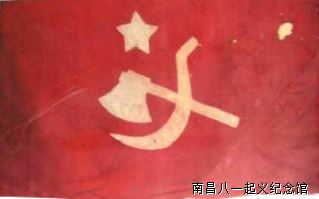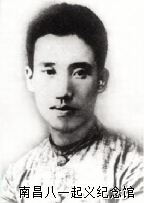In the place where the military flag is raised, listening to the party's story ③: A party flag unexpectedly discovered among the ruins.
Release time:
2022-02-25
On October 15, 1927, the Joint Meeting of the Southern Bureau of the Communist Party of China and the Guangdong Provincial Committee passed the "14th Notice of the Guangdong Provincial Committee of the Communist Party of China: Recent Work Program," which clearly stated: "Abolish the name of the National Revolutionary Army and rename it the Workers' and Peasants' Revolutionary Army, abolish the Blue Sky with a White Sun flag, and use the red flag with the axe and sickle as symbols." This was the first formal decision made by the leadership of the Communist Party of China regarding the party's flag. From then on, the design of the party flag featuring the "red flag with the axe and sickle" basically defined the outline and elements of the party flag.
1970s
Members of the Gongping Commune in Haifeng County during the demolition of a temple
Accidentally discovered a party flag among the ruins
What kind of flag is this?
What story lies behind it?
The party flag accidentally discovered among the ruins comes from the Nanchang Uprising Memorial Hall
00:0002:57
This flag is rectangular and made of velvet. The flag surface has a red background, with a white five-star and the patterns of an axe and sickle sewn in the middle. The flag is housed in the Haifeng County Museum in Guangdong Province and is a national first-class cultural relic. This precious flag was used by the Second District Committee of the Communist Party of China in Haifeng County during the Land Revolution War. It embodies the blood and passion of early Communist leaders like Peng Pai, who pursued truth and national hope, and represents the party's connection with the people in the Haifeng and Lufeng revolutionary base areas, as well as serving as evidence of the early party organization and peasant movement in Haifeng.

The picture shows the party flag used by the Second District Committee of the Communist Party of China in Haifeng County in 1927.
In July 1921, Peng Pai, a prominent early leader of the peasant movement, established the Socialist Research Society and the Labor Sympathy Association in Haifeng County, spreading Marxism. In February 1925, Zhou Enlai, the political department director of the Whampoa Military Academy, arrived in Haifeng to assist in establishing the Communist Party of China Haifeng Branch. Subsequently, the Haifeng Branch of the Communist Party of China continued to grow and strengthen, with grassroots organizations further improved. From November 1927 to January 1938, the number of party members in Haifeng County reached over 25,000.

The picture shows Peng Pai (October 1896 - August 1929)
Under Peng Pai's leadership, Haifeng County established the most combat-effective peasant self-defense armed forces, initiated large-scale peasant movements early in the country, established district and township peasant association organizations; began to create revolutionary base areas, and established China's first county-level Soviet government; at the same time, attempts were made to establish a Communist Party school and set up a labor bank in the revolutionary base area, launching a series of vigorous revolutionary movements.
This party flag has existed for 94 years, weathered the test of time, and the flag surface is now incomplete and has long lost its original bright red color. However, the spirit of struggle forged by this flag will forever reside in the hearts of the people, growing stronger over time, never fading, and becoming even more vibrant in the long river of time.
recommend products
Copyright 2021 Nanchang August 1st Uprising Memorial Hall All Rights Reserved |Bayi Pavilion WeiboWebsite construction:www.300.cn




